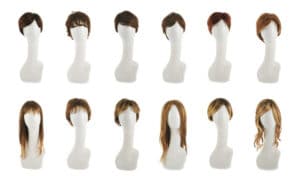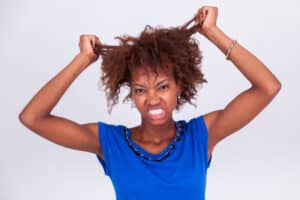Our website is supported by our users. This site contains affiliate links. If you click such a link and make a purchase, we may earn a commission for our endorsement, recommendation, testimonial, and/or link to any products or services from this website. Contact us for Questions
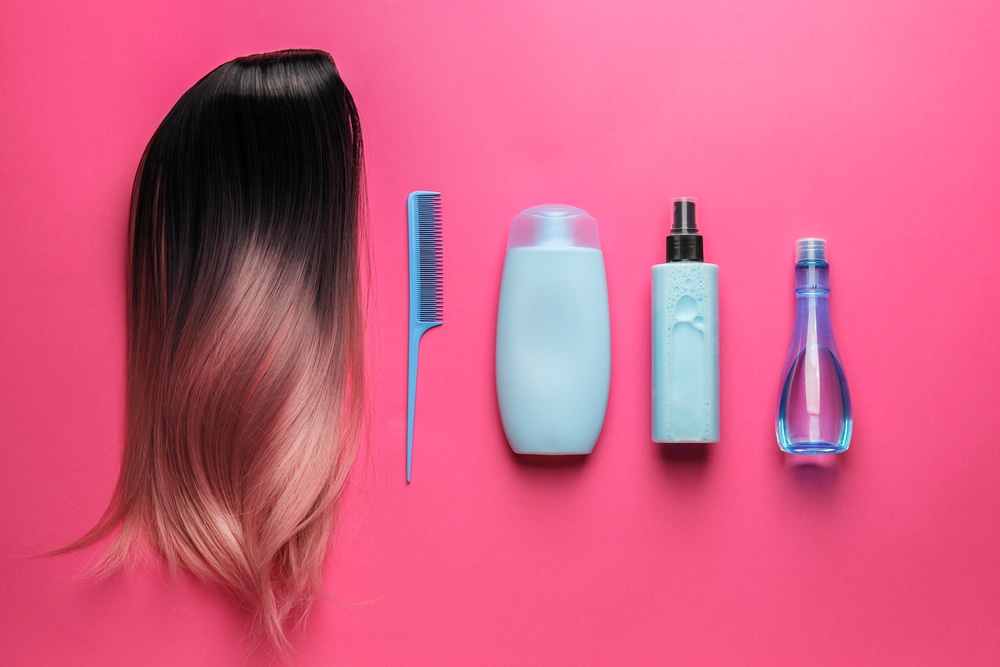
How to Restore a Human Hair Wig: Simple Steps for Bringing Your Wig Back to Life
Restoring a human hair wig basically comes down to giving it a little TLC. First off, start with a gentle wash using a sulfate-free shampoo. Think of it as a calming cleanse!
Follow up with a nice conditioning treatment, using fabric softener or special wig conditioner, to hydrate those thirsty strands. Then let it air-dry naturally – it’s like letting it bask in a sun-soaked afternoon.
The finale in learning how to restore a human hair wig involves styling. With your wig-friendly tools in hand, gently address any matting, frizziness, or dryness, like a stylist taming a wild mane. Before you know it, your wig will be looking vibrant and ready for its close-up!
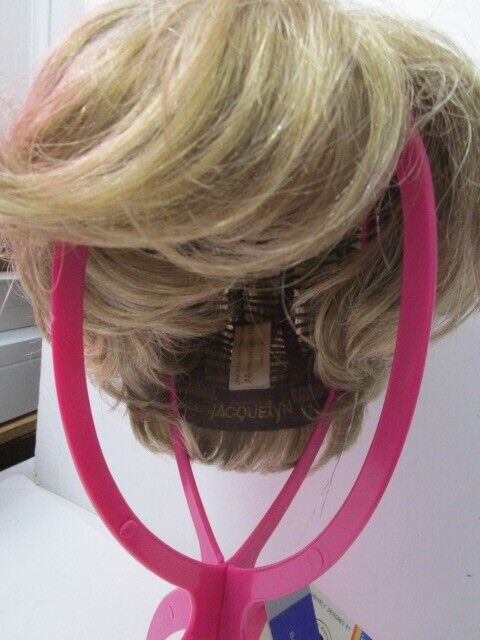
If you’ve got a human hair wig that’s not looking its best, we understand you’d like to revive it to its original glory. It can be expensive to buy a new wig so if you’ve already got a wig you like, why not restore it?
Below is a comprehensive guide, based on advice from the experts, on how to restore a human hair wig. You’ll find step-by-step instructions, tools and products to use, styling tips, and more. Enjoy!!
Can Human Hair Wigs Be Restored?
If you have a human hair wig that has lost its luster, or is tangled and matted, you may be wondering if it can be restored. The good news is that in most cases, human hair wigs can be revived to their former glory with a little bit of effort and care.
The first step in restoring a human hair wig is to determine the cause of the damage. If the wig has been exposed to harsh chemicals or heat styling, it may be more difficult to restore. However, if the damage is due to everyday wear and tear, you should be able to restore the wig with some basic cleaning and conditioning.
One of the most important things to keep in mind when reviving a human hair wig is to be gentle. Human hair is delicate and can easily become damaged if it is handled roughly. Avoid using harsh chemicals or abrasive tools, and instead opt for gentle cleansers and soft brushes.
Here are some tips on how to restore a human hair wig:
- Start by gently brushing out any tangles or knots in the wig. Use a soft-bristled brush or a wide-tooth comb, and be sure to work slowly and carefully to avoid damaging the hair.
- Fill a bowl with lukewarm water and add a small amount of gentle shampoo. Swirl the wig around in the water, being careful not to rub or scrub the hair. Rinse the wig thoroughly with clean water.
- Apply a deep conditioning treatment to the wig, focusing on the ends and any areas that are particularly dry or damaged. Leave the conditioner on for several minutes, then rinse thoroughly.
- Allow the wig to air dry on a wig stand or mannequin head, being careful not to disturb the hair while it is drying.
- Once the wig is dry, you can gently style it using a low-heat setting on a flat iron or curling iron. Be sure to use a heat protectant spray to prevent further damage to the hair.
Overall, restoring a human hair wig is a straightforward process that requires patience and care. With the right tools and techniques, you can bring your wig back to life and enjoy it for years to come.
Why Do Human Hair Wigs Become Dry?
One of the most common reasons a wig needs to be restored is because of dryness. If your wig becomes dry and brittle, there are several reasons it could have happened. Here are the most common:
- Exposure to the Sun: Prolonged exposure to the sun can cause your human hair wig to become dry and damaged. The UV rays can break down the hair’s natural oils, making it prone to tangling and breakage.
- Exposure to Heat: Just like natural hair, human hair wigs can also become dry and frizzy due to excessive heat exposure. Using hot styling tools such as flat irons, curling irons, and blow dryers can strip the hair of its natural moisture, leading to breakage and split ends.
- Lack of Moisture: Human hair wigs require proper moisture to maintain their softness and shine. If you don’t moisturize your wig regularly, it can become dry and brittle over time.
- Chemical Damage: Using harsh chemicals such as bleach, hair dyes, and hair sprays can cause significant damage to your human hair wig. These chemicals can strip the hair of its natural oils, leading to dryness and breakage.
Assessing the Condition of Your Wig
| Wig Condition | Common Causes | Potential Remedies |
|---|---|---|
| Tangling and Matting | Friction, Humidity, Improper Storage | Careful Detangling |
| Shedding | Age of Wig, Improper Care, Poor-Quality Hair | Wig Replacement |
| Dryness | Lack of Moisture | Deep Conditioning Treatment |
| Styling Damage | Use of Heat Tools, Chemicals | Careful Styling, Cut off split ends, repair treatments |
| Color Fading | Exposure to Sunlight, Heat, Chemicals | Wig Dyeing or Replacement |
Before you start restoring your human hair wig, it’s essential to assess its current condition. This will help you determine the level of care your wig needs, and the steps you need to take to restore it. Here are some things to look out for:
Tangling and Matting
One of the most common issues with human hair wigs is tangling and matting. This can happen due to friction, humidity, or improper storage. If your wig is tangled or matted, you will need to detangle it carefully to avoid damaging the hair strands.
Shedding
Another common issue with human hair wigs is shedding. Shedding can happen due to the wig’s age, improper care, or poor-quality hair. If your wig is shedding excessively, you may need to replace it.
Dryness
Human hair wigs need moisture to maintain their softness and shine. If your wig feels dry or brittle, it may need a deep conditioning treatment to restore its moisture levels.
Styling Damage
Styling your wig with heat tools or chemicals can cause damage to the hair strands. Look out for split ends, breakage, or discoloration, which can indicate styling damage.
Color Fading
Human hair wigs can fade over time due to exposure to sunlight, heat, or chemicals. If your wig’s color has faded, you may need to dye it or replace it.
By assessing the condition of your wig, you can determine the level of care it needs. Whether your wig needs a simple detangling or a complete restoration, understanding its condition is the first step toward bringing it back to life.
How To Restore a Human Hair Wig: Gathering Necessary Materials
Identifying Suitable Products
Before beginning the process of restoring your human hair wig, it is essential to gather all the necessary materials. You will need to identify suitable products that are safe to use on human hair wigs. Here are the products you will need:
- Non-alcoholic shampoo
- Fabric softener
- Lukewarm water
- Natural oil (optional)
- Clorox bleach (optional)
It is important to choose a non-alcoholic shampoo as alcohol can damage the hair fibers and cause tangling. Fabric softener is an effective way to restore the softness and shine of your wig. Lukewarm water is essential for washing and rinsing the wig, as hot water can damage the hair fibers.
Natural oils such as Moroccan oil or coconut oil can help to restore moisture and leave your wig feeling and smelling incredible. Clorox bleach is optional and should only be used if your wig is severely discolored.
Assembling Tools
In addition to the necessary products, you will need to assemble a few tools to complete the restoration process. Here are the tools you will need:
- Three bowls or containers that will not be used for food
- Paddle brush
- Stocking wig cap
- Basin
The three bowls will be used to hold the hot water and bleach solution, the non-alcoholic shampoo solution, and the fabric softener solution. The paddle brush is used to gently brush the hair without shedding or tearing it. The stocking wig cap is used to hold the hair in place while washing it. The basin is used to hold the lukewarm water for rinsing the wig.
By gathering all the necessary materials and tools, you are now ready to begin the process of restoring your human hair wig.
Preparation Process

Before you start restoring your human hair wig, you need to prepare it properly to avoid any damage. This section will cover the two main sub-sections of the preparation process: Detangling the Wig and Pre-Wash Steps.
Detangling the Wig
Detangling your wig is the first step in preparing it for restoration. Use a wide-tooth comb or a wig brush to gently remove any knots or tangles. Start at the ends of the hair and work your way up to the roots, being careful not to pull or stretch the hair too much. If there are any stubborn knots, use your fingers to gently loosen them before combing.
Pre-Wash Steps
The pre-wash steps are important to ensure that your wig is clean and ready for restoration. Here are some steps you can follow:
- Fill a bowl or sink with warm water and add a non-alcoholic shampoo. Stir well.
- Immerse your wig in the water and gently swirl it around for a few minutes. Do not rub the hair together as it can cause tangling.
- Rinse the wig thoroughly with warm water to remove any shampoo residue.
- Fill another bowl or sink with warm water and add a conditioner. Stir well.
- Immerse your wig in the water and gently swirl it around for a few minutes. Make sure the conditioner is evenly distributed throughout the hair.
- Rinse the wig thoroughly with warm water to remove any conditioner residue.
Once you have completed these steps, your wig is ready for restoration. Remember to be gentle when handling your wig to avoid any damage to the hair fibers.
Washing the Wig
When it comes to restoring a human hair wig, washing it is an essential step. Here are the steps to follow:
Applying Shampoo
- Fill your sink with cold water.
- Add a high-quality shampoo that is suitable for the hair type you are washing. Use 1 to 2 squeezes of shampoo.
- Use a wire wig brush for straight or wavy wigs, and a wide-toothed comb or your fingers for curly wigs (including natural/African-textured).
- Gently brush the wig starting from the ends and working your way up to the roots.
- Massage the shampoo into the wig using your fingers.
- Pay attention to the nape and hairline, as these areas tend to collect more dirt and oil.
- Do not scrub the wig vigorously as this can damage the hair.
Rinsing Process
- Rinse the wig thoroughly with cold water until all the shampoo is removed.
- Do not twist or wring the wig as this can cause tangling and damage to the hair.
- Gently squeeze out the excess water using a towel.
- Do not rub the wig with the towel as this can cause frizzing.
- Hang the wig on a wig stand or mannequin head to air dry.
- Do not use a hairdryer as this can damage the hair.
By following these steps, you can effectively wash your human hair wig and restore its natural shine and softness.
Conditioning the Wig
When it comes to maintaining your human hair wig, conditioning is an important step that should not be overlooked. Conditioning helps to keep your wig soft, shiny, and manageable. Here are the steps to follow when conditioning your wig:
Application of Conditioner
- Start by washing your wig with a gentle shampoo. Rinse it thoroughly with lukewarm water.
- Apply a generous amount of conditioner to your wig. Make sure to cover the entire wig, from the roots to the tips.
- Gently massage the conditioner into the hair using your fingers. Be careful not to rub too hard, as this can cause tangling and damage to the hair.
- Leave the conditioner on the wig for at least 5-10 minutes. For deeper conditioning, you can leave it on for up to 30 minutes.
Rinse and Repeat
- Rinse the wig thoroughly with lukewarm water. Make sure to remove all the conditioner from the hair.
- If your wig is particularly dry or damaged, you can repeat the conditioning process for added moisture and nourishment.
- Gently squeeze out any excess water from the wig. Do not twist or wring the hair, as this can cause damage and tangling.
- Allow the wig to air dry on a wig stand or mannequin head. Avoid using a hair dryer, as this can damage the hair and cause frizz.
By following these simple steps, you can keep your human hair wig looking and feeling its best. Conditioning your wig regularly will help to keep it soft, shiny, and manageable, ensuring that you can enjoy your wig for years to come.
Drying Techniques
When it comes to drying your human hair wig, there are two main techniques you can use: air drying and blow drying. Each has its own advantages and disadvantages, so it’s important to choose the right one for your needs.
Air Drying
Air drying is the most gentle way to dry your human hair wig, as it does not expose it to heat or friction. To air dry your wig, simply follow these steps:
- Gently squeeze out any excess water from your wig using a towel.
- Place your wig on a wig stand or mannequin head to help it maintain its shape.
- Allow your wig to air dry completely before styling or wearing it.
One advantage of air drying is that it is less likely to cause damage or frizz to your wig than blow drying. However, it can take several hours or even overnight for your wig to dry completely, so it’s important to plan ahead.
Blow Drying
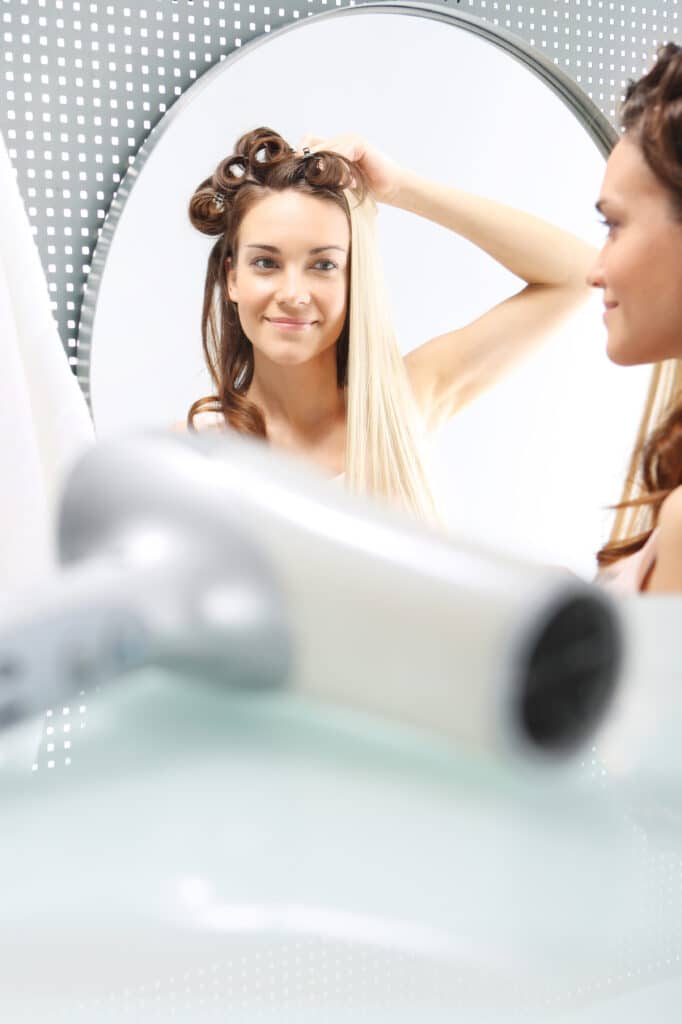
Blow drying is a faster way to dry your human hair wig, but it does require more care and attention to avoid damage. To blow dry your wig, follow these steps:
- Use a towel to gently squeeze out any excess water from your wig.
- Apply a heat protectant spray or serum to your wig to help prevent heat damage.
- Use a low heat setting on your blow dryer to dry your wig, holding the dryer at least 6 inches away from the hair.
- Use a round brush to gently style your wig as you dry it, being careful not to tug or pull on the hair.
One advantage of blow drying is that it can help you achieve a sleek, polished look more quickly than air drying. However, it is important to use a low heat setting and a heat protectant to avoid damaging your wig.
Overall, the best drying technique for your human hair wig will depend on your personal preferences and needs. Whether you choose to air dry or blow dry, be sure to handle your wig gently and avoid excessive heat or friction to keep it looking its best.
Styling and Maintenance
Styling Tips
Styling your human hair wig is easy and fun. Here are some tips to help you achieve the perfect look:
- Use a heat protectant or moisturizing leave-in conditioner before styling your wig to prevent damage and dryness.
- Avoid using hot tools on wet hair as this can damage the hair fibers.
- Use a wide-toothed comb or a wig brush to detangle your wig gently.
- Style your wig while it’s on a wig stand to make it easier to see and work with.
- Experiment with different styles and looks to find what works best for you.
Long Term Care
To keep your human hair wig looking great for a long time, you need to take proper care of it. Here are some tips for long term care:
- Store your wig on a wig stand or mannequin head to help maintain its shape.
- Wash your wig every 7-10 wears or when it starts to look dirty or oily.
- Use a sulfate-free shampoo and conditioner designed for human hair wigs.
- Rinse your wig thoroughly with cool water after washing to remove all shampoo and conditioner.
- Gently blot your wig with a towel to remove excess water and let it air dry on a wig stand.
- Avoid exposing your wig to direct sunlight or heat sources as this can damage the hair fibers.
- Use a wig cap to protect your natural hair and prevent oils and sweat from transferring to your wig.
By following these styling and maintenance tips, you can keep your human hair wig looking great for a long time. Check out the following article for a complete guide on how to care for your human hair wig.
Tips on How to Restore a Curly Human Hair Wig
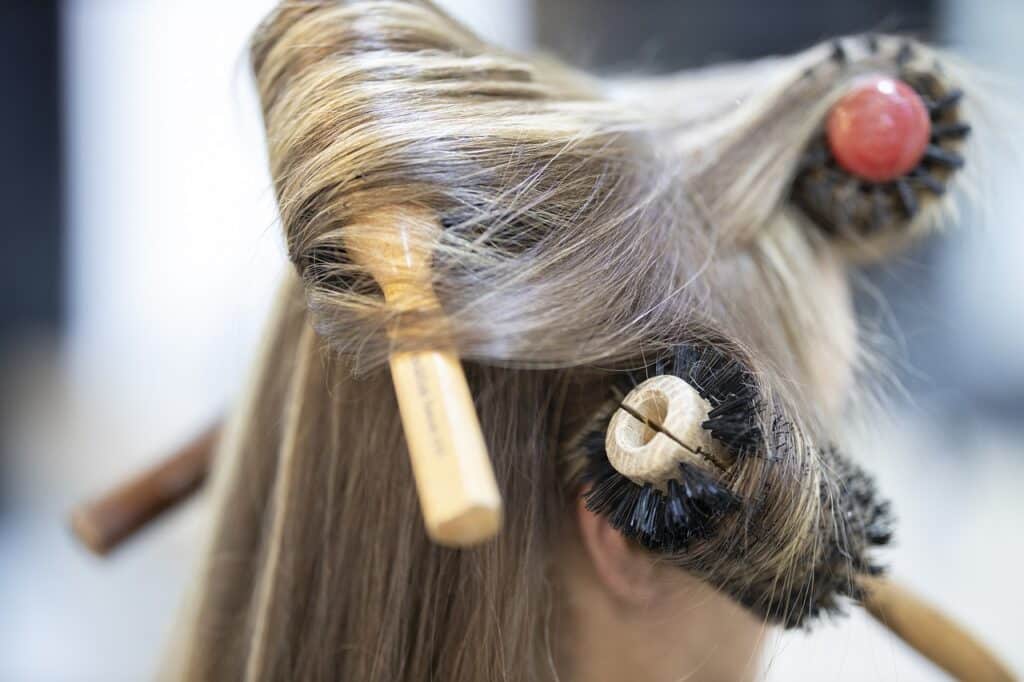
If you have a curly human hair wig that has lost its luster and bounce, you may be wondering how to restore it. Here are some tips to help you revive your curly wig:
- Start with a deep conditioning treatment. Apply a generous amount of moisturizing conditioner to your wig, making sure to distribute it evenly from the roots to the ends. Cover the wig with a plastic cap and let it sit for at least 30 minutes. Rinse the wig thoroughly with cool water to seal in the moisture.
- Detangle the wig gently. Use a wide-tooth comb or your fingers to gently detangle the wig, starting at the ends and working your way up to the roots. Be careful not to pull or tug too hard on the hair, as this can cause damage.
- Use a curl-defining cream. Apply a small amount of a curl-defining cream to your wig, working it through the hair with your fingers. This will help to enhance the natural curl pattern and reduce frizz.
- Avoid heat styling. Heat styling tools like flat irons and curling irons can damage human hair wigs, especially curly ones. If you must use heat, use a heat protectant spray and keep the temperature low.
- Store your wig properly. When you’re not wearing your wig, store it on a wig stand or in a box to prevent tangles and damage. Avoid exposing the wig to direct sunlight or heat, as this can cause the hair to dry out and lose its curl pattern.
By following these tips, you can restore your curly human hair wig to its former glory and enjoy beautiful, bouncy curls once again.
Tips on How To Restore a Human Hair Blend Wig
If you have a human hair blend wig, it is essential to know how to restore it to its original state. Here are some tips to help you restore your human hair blend wig:
Tip 1: Use a Mild Shampoo
When washing your wig, make sure to use a mild shampoo. Avoid using harsh shampoos that can strip the hair of its natural oils, leaving it dry and brittle. A mild shampoo will help to clean the wig without damaging the hair.
Tip 2: Use a Conditioner
After washing your wig, use a conditioner to help restore its natural shine and softness. A good conditioner will help to detangle the hair, making it easier to manage. You can also use a leave-in conditioner to keep the hair moisturized throughout the day.
Tip 3: Avoid Heat
Avoid using heat on your human hair blend wig. Heat can damage the hair, causing it to become dry and brittle. If you need to style your wig, use a low heat setting or let it air dry.
Tip 4: Store Your Wig Properly
When not in use, store your wig properly to prevent tangling and damage. You can store it on a wig stand or in a wig box. Make sure to brush the hair before storing it to prevent tangling.
Tip 5: Use Hair Oil
Using hair oil can help to restore the natural shine and softness of your wig. Apply a small amount of hair oil to the hair and gently massage it in. This will help to moisturize the hair and prevent it from becoming dry and brittle.
By following these tips, you can restore your human hair blend wig to its original state, keeping it looking beautiful and natural.
Frequently Asked Questions
What’s the process for restoring a human hair wig using fabric softener?
To restore a human hair wig using fabric softener, you will need to mix one part fabric softener with three parts water in a spray bottle. Spray the solution onto the wig and comb it through gently. Rinse the wig thoroughly with cool water and let it air dry.
What products can I use to rejuvenate my wig?
There are many products that can be used to rejuvenate a human hair wig, including leave-in conditioners, oils, and deep conditioning treatments. Be sure to choose a product that is specifically formulated for human hair wigs.
What methods can be employed to de-frizz a wig?
To de-frizz a human hair wig, you can use a leave-in conditioner or a smoothing serum. Apply the product to the wig and comb it through gently. You can also use a flat iron or a hair dryer on a low setting to smooth out any frizz.
What type of oil is most suitable for human hair wigs?
Argan oil is a popular choice for human hair wigs because it is lightweight and does not leave a greasy residue. It also helps to moisturize and protect the hair.
Is it okay to use olive oil on my human hair wig?
While olive oil can be used on human hair wigs, it is not the best choice as it can weigh down the hair and leave a greasy residue. It is best to use a product that is specifically formulated for human hair wigs.
What could be the cause of my human hair wig matting?
Human hair wigs can become matted due to friction, humidity, or improper care. To prevent matting, be sure to store your wig properly and avoid sleeping or swimming in it.
What effects does boiling have on a human hair wig?
Boiling a human hair wig can cause damage to the hair and should be avoided. Instead, use a deep conditioning treatment to restore the wig’s moisture and luster.


